Talent management is all about how to unlock potential and retain talent. What can your workforce accomplish today, and what additional talent does your organization need to remain competitive in the future?
To ensure your existing employees grow and thrive and you have the right talent entering the business, your team needs to understand all the moving parts of talent planning.
TL;DR – Key Takeaways
- Talent planning is a way for HR to support strategic business goals by ensuring the company has the right skilled employees now and is ready to attract the future talent it will need.
- The core components of talent planning include elements such as analyzing your workforce, candidate sourcing, and predicting your future talent needs.
- Talent planning focuses on how companies source and keep the right talent in place, workforce planning analyzes what roles and skills a company needs, and talent management is about how that talent is nurtured throughout their professional development.
- Talent planning can help a company better support innovation and employee engagement, reduce staff turnover and improve organizational resilience.
- To create an effective talent planning strategy, your team should incorporate best practices such as identifying talent gaps, implementing talent analytics, and investing in the right technologies.
- Talking about the right technology… A great talent planning strategy goes hand in hand with a smart recruitment strategy that draws in top talent. Can you always tell top performers from smooth talkers? Our skills assessment platform can help your team spot top talent fast!
What is talent planning?
Talent planning is a strategy that entails predicting, sourcing, nurturing, and aligning a company’s best asset – their people – with the business’s core goals. A successful talent management strategy sets a company up for long-term growth and success by having the right people in the right roles at the right time.
What makes up a talent planning strategy?
Achieving this alignment requires dedicated effort. If you’re looking to create a talent planning strategy, the first step is understanding how the following key components support your business’s objectives.
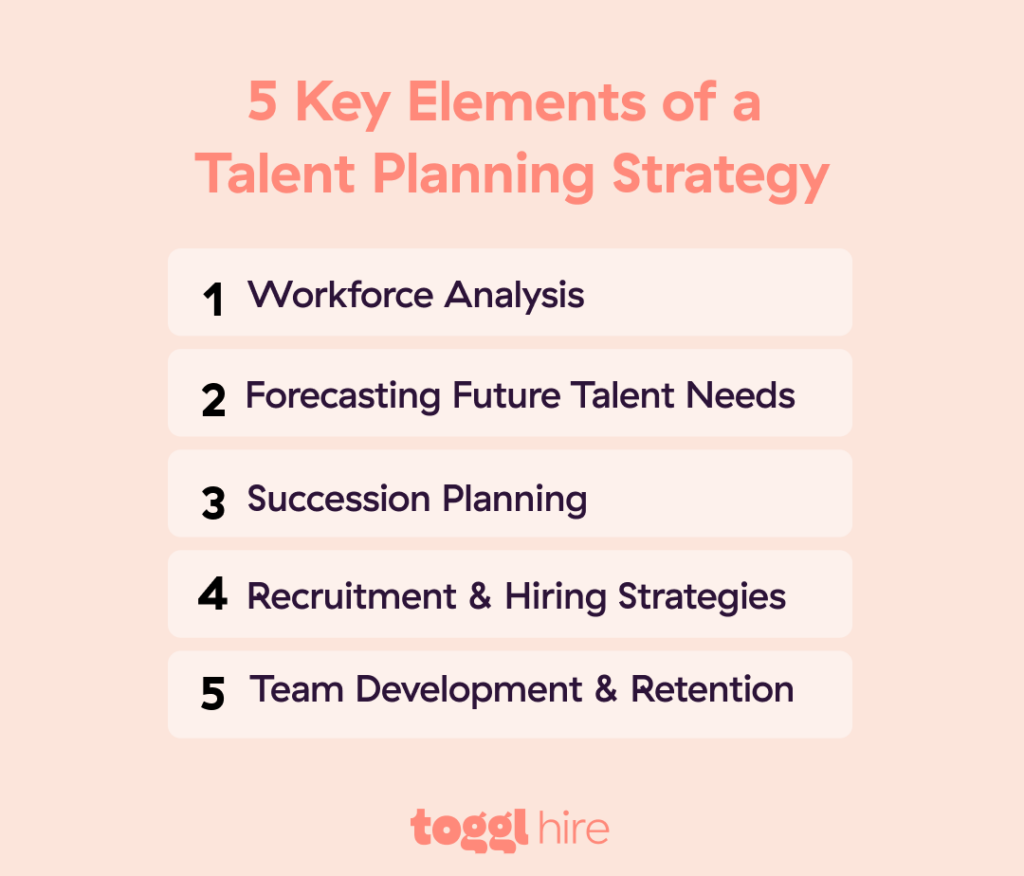
1. Analyze your workforce
Workforce analysis is at the heart of any successful talent strategy. By using data-driven metrics to analyze the level of productivity and current skills in-house, you can forecast potential talent needs more accurately.
For example, if a company plans to launch a new product, you’ll probably need to hire a bunch of new engineers or marketers.
Need to bridge an organizational talent gap? Here’s how:
2. Candidate sourcing
A company can tap into two main sources of talent: internal and external candidates. The talent that’s already in your organization is a rich source! Depending on the company’s future needs, your internal talent may require additional training and development. The good news is that they’re already sold on your employer brand and create value daily for your organization.
On the other hand, talent acquisition or bringing in external resources has its plusses, too. New talent could bring in fresh ideas, boost diversity, and, hopefully, introduce better ways of doing things.
3. Hiring and recruitment process
Internal talent is a great resource to fill vacancies. However, with many positions to fill, an effective hiring plan will help your organization bring in the top talent it needs now and for the future.
By maintaining your talent pool, your team will be ready to fill gaps when employees leave and be ready for any big changes, like the rise of remote work, or rapid growth. Plus, your team can be better prepared and adapt quicker to talent needs when your recruitment process is data-driven.
4. Future talent forecasting
HR teams can predict what their future human resources or talent needs will be based on the results of their workforce analysis. For example, they might see that in the following financial year, the company will need 20% more software engineers due to a big project coming up.
Anticipating future needs also means understanding upcoming market trends and emerging technologies and planning for the right talent supply to meet those changes.
5. Employee growth and development
Investing in your current employees’ development pays off. With job-relevant training, they learn new skills and grow. Their new capabilities help them feel more valued while at the same time creating more value for the organization. It’s a win-win!
Per Zippia, companies that champion staff training can experience 24% higher profit margins.
Nice.
6. Succession planning process
After developing the company’s internal talent, the next step is to nurture and mentor young leaders for more senior leadership roles. Basically, ensuring that key leadership roles always have the right talent, skills and business experience to be effective.
Succession planning is a medium to long-term strategy that sets juniors up for success in senior roles. This could include assessing what additional training they might need, such as leadership or management skills, as well as mobilizing senior leaders to effectively pass the baton.
Is talent planning and workforce planning the same thing?
Talent planning and workforce planning may have similar goals, but they’re not the same thing. Workforce planning analyzes what roles and skills a company needs now and in the future. While talent planning focuses on how an organization will attract, develop, and keep the right people for those roles.
For successful business growth and sustainability, hiring managers need both. Workforce planning ensures you have enough employees with the right skills to reach your business goals. Talent planning provides the strategies to effectively manage your human capital.
| Workforce Planning | Talent Planning | |
|---|---|---|
| Purpose | It’s a process that matches business and staffing needs to ensure an organization has the right people, in the right places, at the right times. | Talent planning focuses on the strategies used to attract, retain, develop, and utilize the workforce, and forms part of the broader workforce planning strategy. |
| Scope | Involves analyzing current capabilities, forecasting future workforce needs based on business goals, and creating a plan to bridge any gaps. | While workforce planning might identify that you need five more engineers next year, talent planning will establishes how to find, train, and retain those engineers. |
| Components | Includes aspects like: – Forecasting future staffing needs based on business objectives. – Analyzing current demographics and skills. – Identifying gaps and skills shortages. – Planning for situations like employee turnover, promotions, or market shifts. | Talent planning strategies focus on: – Recruitment strategies. – Training and development. – Succession planning. – Retention initiatives. – Employee value proposition and branding. |
How does talent management differ from talent planning?
Talent management and talent planning are both important parts of an HR strategy, but they serve different purposes in optimizing employee performance.
Essentially, talent management refers to how talent is nurtured throughout their career journey. For example, supporting a new customer success specialist from onboarding through to a management role.
Talent planning caters to filling future human resource requirements, such as a future need to hire 10 more customer success specialists that’ll be needed for a new client.
| Talent Management | Talent Planning | |
|---|---|---|
| Focus | Covers the entire employee lifecycle from recruitment to retirement. | Anticipating and preparing for future talent needs. |
| Components | Involves recruitment, onboarding, performance management, learning and development, succession planning, retention strategies, and compensation. | Emphasizes workforce analysis, demand forecasting, supply forecasting, gap analysis, and action strategies. |
| Goal | Employees that feel supported, satisfied, willing to do their best and grow within the organization. | Ensures the organization has the right people in the right roles, now and in the future. |
7 reasons to take strategic talent planning seriously
Talent management planning and the level of business success go hand in hand. Why? Because a business is only as competitive and impactful as its human resources. Let’s take a closer look at why it really matters.
1. Achieving business goals through talent alignment
Having the right talent is essential if a business wants to achieve its business goals. When the human resources are aligned with goals and are goal-driven, they can work more effectively together.
EXAMPLE
Apple, for example, actively works to anticipate the skill sets the business needs for future products. When they began the R&D for the Apple Watch, they hired experts in health and fashion to align their talent with the new product direction.
2. Supporting innovation by anticipating skill gaps
As industries and technologies evolve, new skills emerge while others become obsolete. In fact, the World Economic Forum estimates that 44% of workers’ skills will be disrupted over the next five years! Companies that identify these gaps early on can plan their talent needs more strategically and support greater innovation.
EXAMPLE
IBM’s proactive approach towards reskilling its people helped the company to transition from a hardware-focused company to a cloud and cognitive solutions leader.
3. Leveraging specialized skills for growth and expansion
Companies that plan to expand into new markets or products need talent that understands those spaces. For instance, if a company that offers business process software wants to add a Customer Relationship Management (CRM) tool to their product family, they’ll want to get a CRM expert on board to ensure the design and functionality cover all possible use cases.
EXAMPLE
Or, when Netflix expanded internationally, they hired local content strategists to cater to regional tastes, which led to hits like “Money Heist” from Spain, “Squid Game” from South Korea and “Sacred Games” from India.
4. Reducing turnover and boosting retention
By understanding what roles and skills a company will need in the future, HR teams can provide relevant career paths and development opportunities for their employees. The result can often be a more engaged workforce and up to 34% higher retention rates.
EXAMPLE
For instance, Deloitte’s “Mass Career Customization” program empowers their employees to adjust their career paths based on life stages, often leaving them feeling happier with their work and sticking around for longer.
5. Reducing hiring costs
When hiring the right talent goes wrong, it can be a costly mistake. Effective, long-term talent planning can help companies source the right number of staff and those who are a good fit. And avoid the unnecessary expenses of a bad-culture-fit candidate leaving within their first month, for example.
EXAMPLE
After the 2008 financial crisis, Bank of America had to lay off more than 30,000 employees. Why? Many banks didn’t have a strong talent plan, resulting in them suffering the high costs of layoffs and high recruitment expenses when the economy recovered.
6. Increasing stability through leadership succession
Employees grow, take up leadership roles, and, at some point, move on from the company. To ensure continuity in key leadership positions, companies must nurture and mentor internal candidates to take over when the current leaders retire or leave.
Talent planning enables companies to maintain solid leadership by ensuring the right talent is in the right role, making it easier for agile decisions in uncertain times while also maintaining a good employer brand.
EXAMPLE
For example, General Electric (GE) has championed leadership development and succession planning since 1910! They understand the ongoing benefits of investing in leadership development.
7. Improving organizational resilience
Companies can be better prepared for global or industry changes, like the massive uptake of AI-driven business software, with a diverse talent pool and skills that improve their adaptability and resilience.
EXAMPLE
Like Toyota, whose talent planning and cross-training approach helped them make a quick recovery after the 2011 earthquake in Japan. The company’s problem-solving culture enabled its employees to be versatile, shifting roles and responsibilities as needed.
7 Best practices for an effective talent planning strategy
Any organization can run like a well-oiled machine with the right skills on board and top future talent on the radar. When devising your talent planning strategy, follow these 7 key best practices:
1. Align your talent strategy with your business goals
The real power lies in that sweet spot where talent planning and the business’s strategic goals align. Companies can organize their human resources most effectively, continually focusing on core business objectives and reaching them faster.
A good place to start is to get clarity on your business goals and KPIs.
A team is only as good as the members that make it up. For a company to have a team that works like a finely oiled machine, they need to align their business goals with their available talent. This alignment goes deeper than just putting people into the positions they’re best suited for. Alignment strategy looks at the business’s mission and vision and puts people in places that best direct the company to maintain both of them.
Source
2. Identify skills gaps
With a good understanding of business goals and the resources needed to fulfil them, you can identify current skills gaps and talent gaps for the future. With strategic skills and talent planning, companies can streamline how they work, be more productive and cost-effective.
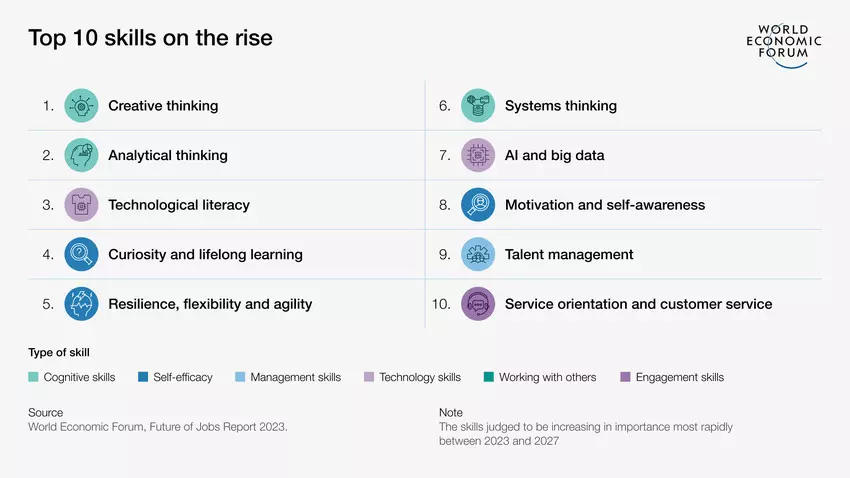
The WEF Future of jobs report suggests that the top skills workers need for 2023 include:
- Analytical thinking
- Creative thinking
- Resilience, flexibility and agility
Performing a talent gap analysis can help a business future-proof its human resources.
With Toggl Hire’s pre-employment skills tests, your team can select talent with the right job-specific skills you need.
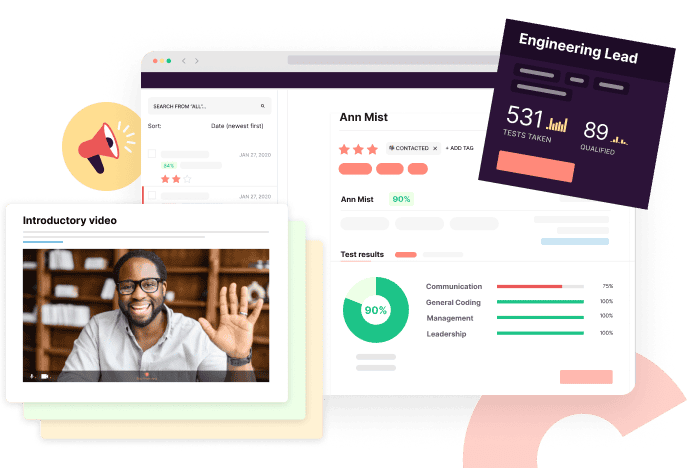
3. Devise your hiring plan
To onboard the most talented individuals and plan for succession, your team will need a comprehensive hiring plan. With that in place, you’ll be more likely to source diverse talent, drive higher retention, build a strong talent pipeline, and reduce the costs of a bad hire.
Hiring new employees takes up a significant amount of time, resources, and funds. And hiring the wrong employee costs organizations almost 2x the employee’s annual salary—for a startup, these issues can make or break its growth trajectory.
Source
For instance, if you’re building a recruitment or hiring plan for a startup, consider including elements such as:
- Working out your hiring budget, so you have figures to prove your ROI.
- Creating detailed job descriptions that sell your culture and explain the role’s potential impact.
- Posting on specialist job boards like ZipRecruiter and Dice.
4. Implement talent analytics
Today, no department is exempt from using a data-driven approach to their operations. In recruiting, data plays a big role in continually improving your recruitment funnel. Talent acquisition teams create and track metrics, such as quality of hire, to ensure that recruiting efforts are efficient, in addition to other goals like reducing personal bias.
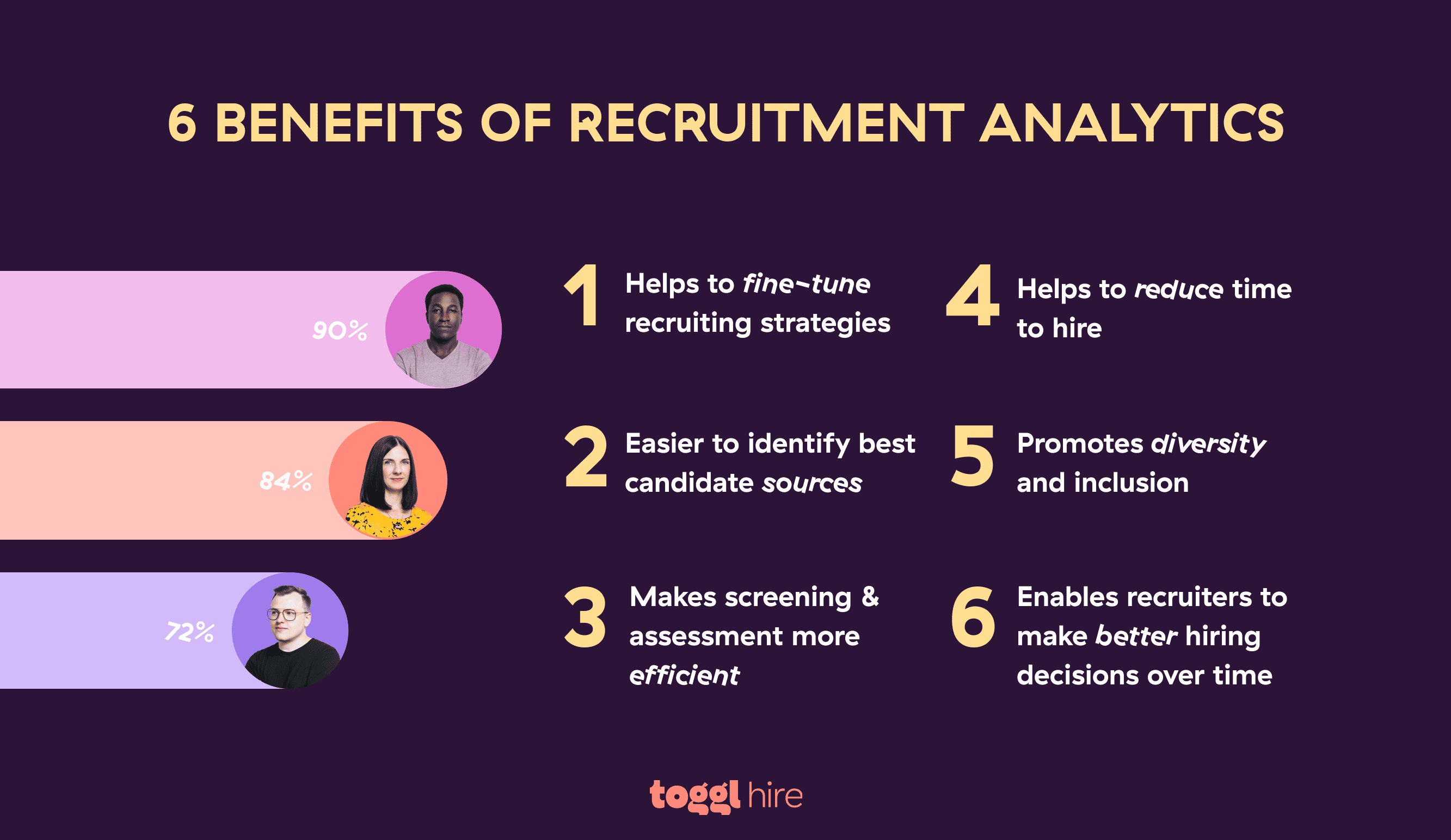
A few basics to begin using talent analytics include:
- Define your goal
- Decide what to measure and how
- Gather and analyze the data
- Measure the metrics and use what works well to continually improve
- Review your process regularly to ensure you’re on track
5. Invest in talent development
To support business continuity and growth, it’s also important to nurture and develop the talent you already have. A key aspect of that is identifying high-performing employees, rewarding them for going above and beyond, and incentivizing them to stick around, by offering them shares in the business for instance, and opportunities for continuous learning.
A bonus with that focus is it can encourage and develop a high performance culture because employees see that their contributions are noticed, valued, and rewarded. As a result, these actions also tie into your retention strategy.
6. Invest in the right technology
Along with using data to work smarter, HR teams also need the right technology to get the most from digital processes. This could include software, such as automated skills testing, workforce planning, and a learning management system.
Is your team using the best recruitment software tools? Read our blog to check whether you’re missing any:
7. Attract the best talent with your employer branding
Employer branding plays a big role in attracting top talent to fill critical roles. When they feel like your detailed job ad is speaking directly to them and includes the benefits, impact and culture they’re looking for, they’ll click on that Apply button fast.
Companies that have a strong employer brand coupled with an equally strong employee value proposition are more likely to attract and retain the kind of employees that help a company kick ass!
Tip: Create job postings that make it clear what kind of candidate you’re looking for and what they can expect from the role.
Simplify the talent hunt with Toggl Hire
Organizations need a mix of top performers and high-potential employees to achieve their business targets. By aligning with long-term business objectives, HR teams can ensure the business has the right employees it needs to grow and be sustainable.
Sourcing quality talent for your open roles doesn’t need to be a tedious task. Automate the selection process with Toggl Hire’s skills tests and select quality candidates that match your talent needs now and in the future.
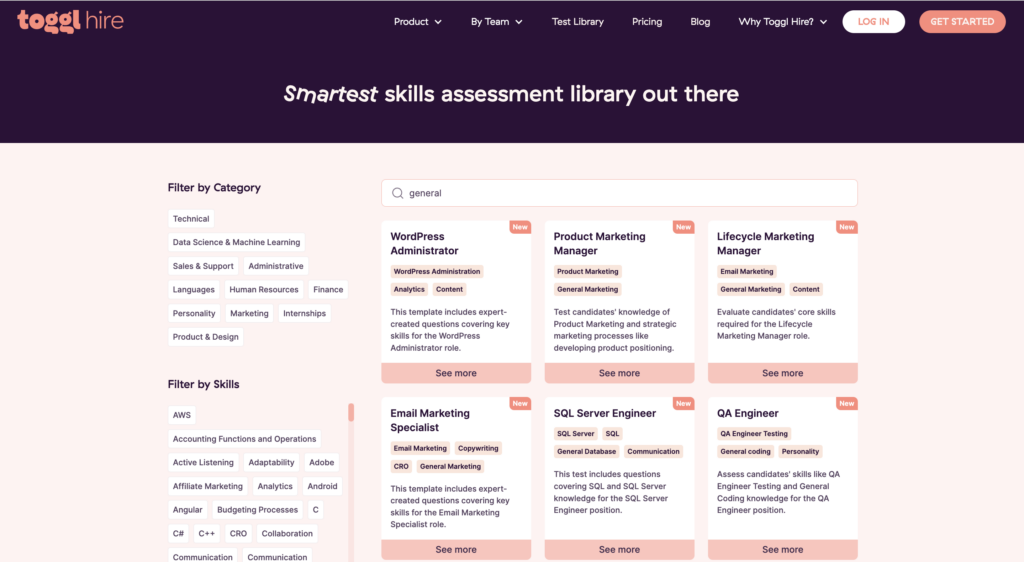
Juste loves investigating through writing. A copywriter by trade, she spent the last ten years in startups, telling stories and building marketing teams. She works at Toggl Hire and writes about how businesses can recruit really great people.












